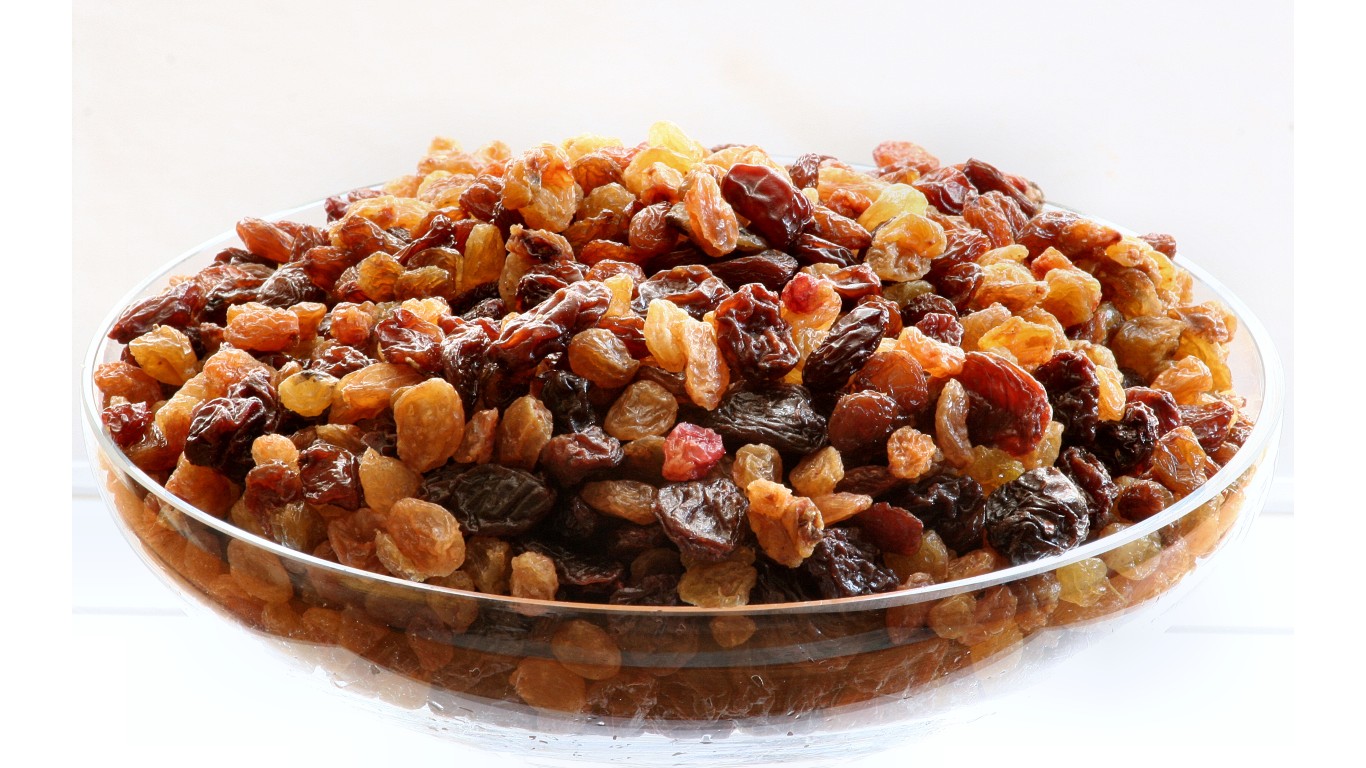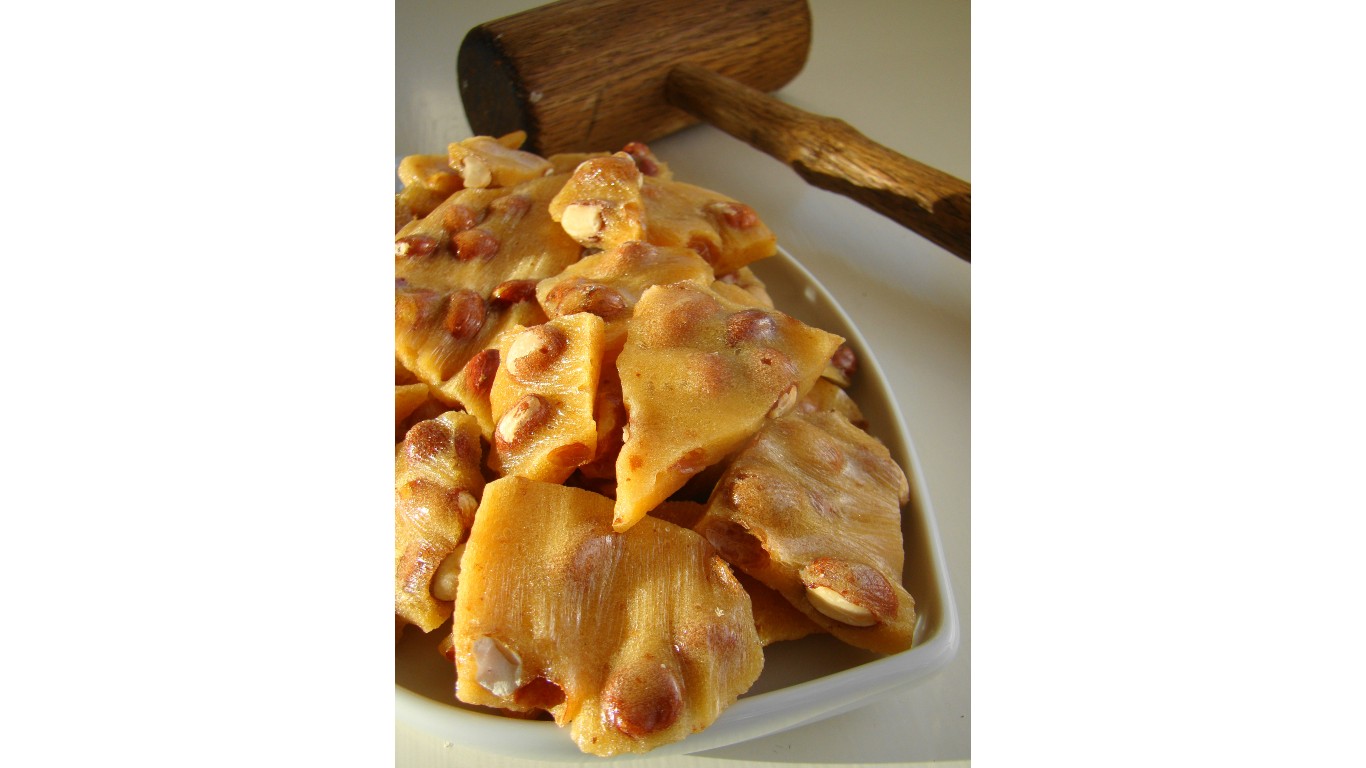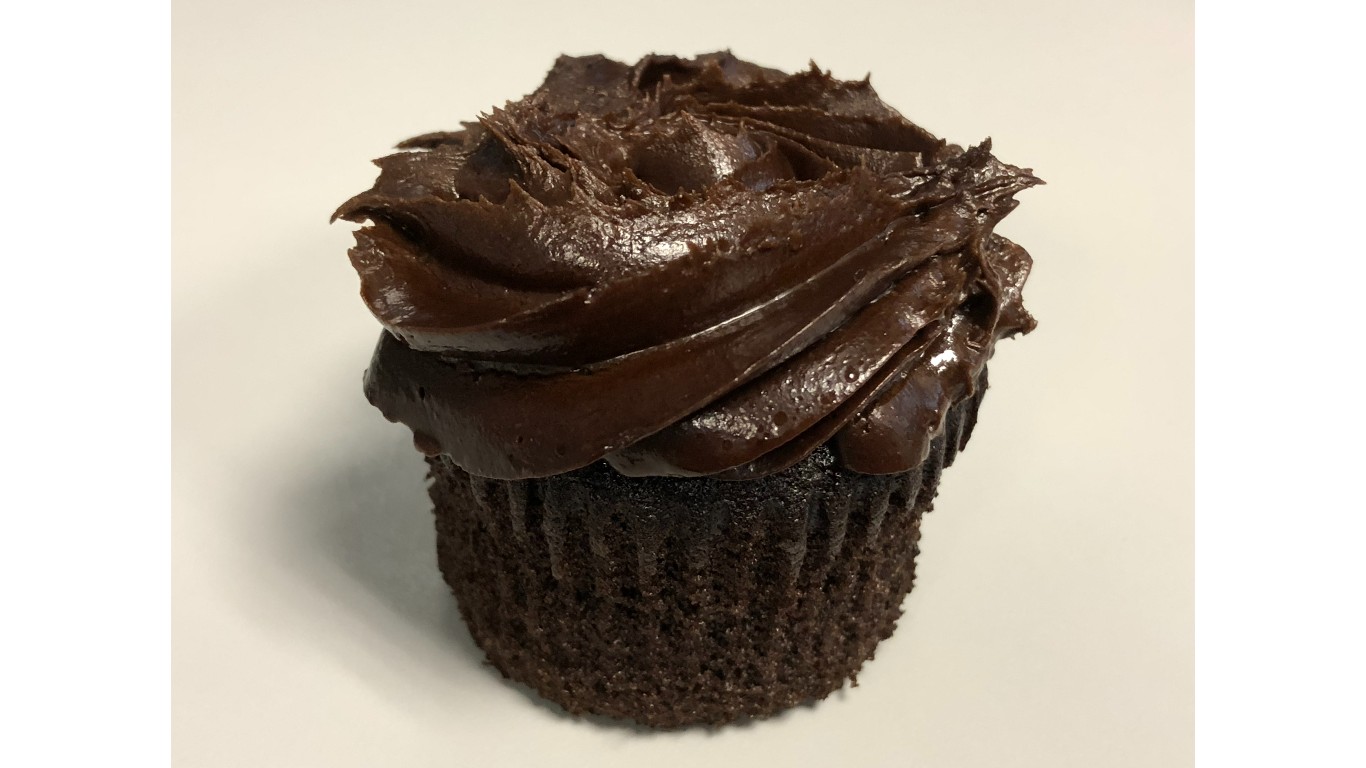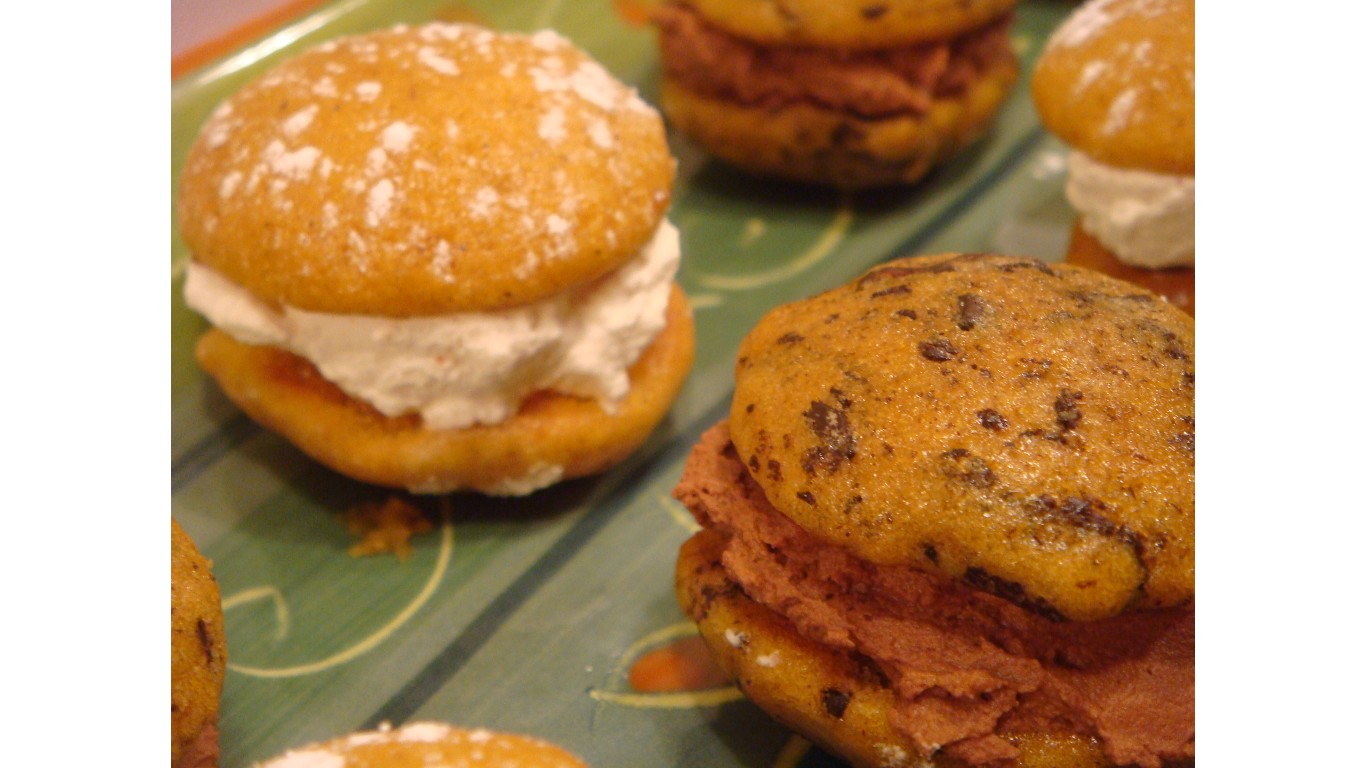
Long before packaged candy bars became the Halloween treat of choice, people were crafting homemade goodies to celebrate All Hallows’ Eve — i.e., Halloween. Some of the food traditions of the season in the U.S. hearken back to the British Isles, where the Celtic roots of the Samhain celebration, the precursor to our modern holiday, still run deep.
Around the turn of the 20th century, Halloween celebrations in the U.S. were mainly parties and festivals featuring games, jack-o’-lantern carving, chestnut cracking, bobbing for apples, and elaborate pranks. Trick-or-treating didn’t become widespread until the 1930s, and when it did, the treats were mostly homemade baked goods, fruits, nuts, toys, even money.
It wasn’t until the 1950s that candy manufacturers started marketing candy specifically for Halloween, and by the ‘70s, packaged candy became the norm. As parents began to fear that strangers could poison their children with Halloween treats, candy in sealed wrappers gained a widespread appeal and home-baked goods fell to the wayside. (These are some popular discontinued snack foods we really miss.)
To determine the origins of 14 popular Halloween treats, 24/7 Tempo referred to sources including Business Insider, USA Today, Parade, Taste Atlas and Allrecipes. These treats include home-made classics as well as a few popular commercial confections. (Here’s a list of every state’s favorite Halloween candy.)
Raisin spice cupcakes
> Invented: Middle Ages
Classic spice cakes with raisins are eerily reminiscent of soul cakes — a type of biscuit with spices and dried fruit traditionally eaten in Britain and elsewhere around Halloween, All Saints’ Day, and All Souls’ Day to commemorate the deceased. The poor would perform and sing for wealthier households during this period in exchange for these treats — a practice that evolved into modern-day trick-or-treating.
[in-text-ad]

Popcorn balls
> Invented: 1861
While popcorn balls were likely around earlier, the first printed recipe dates back to 1861 in E.F. Haskell’s “Housekeeper’s Encyclopedia.” This old-fashioned treat, which can be adorned with caramel and other candies, became popular at Halloween parties in the ’50s, partly due to popcorn’s low cost.
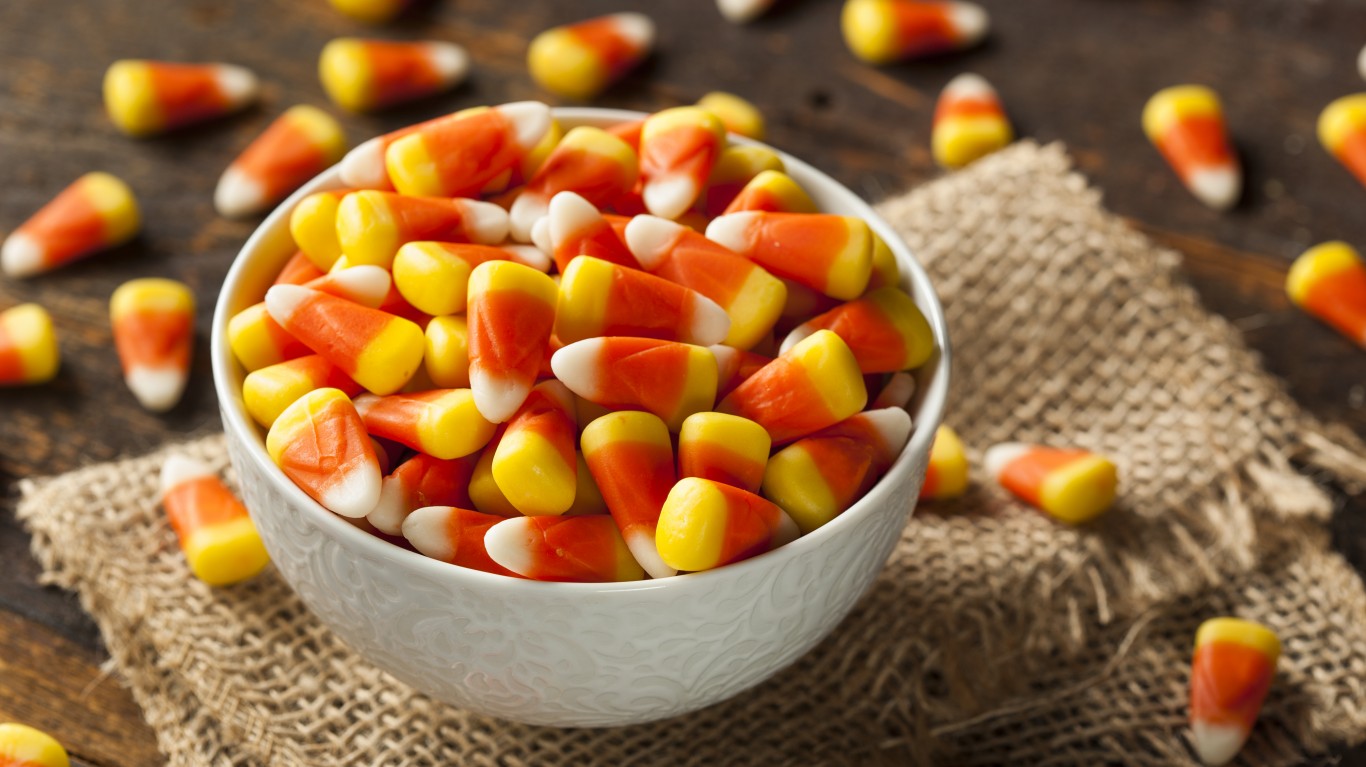
Candy Corn
> Invented: 1880s
Candy corn, first made in the 1880s by the Wunderle Candy Company in Philadelphia, became a Halloween tradition due to its autumnal colors and seasonal popularity. Despite divisive opinions on its taste, it’s the third most popular Halloween candy, with most of its 35 million pounds produced annually consumed during this season.

Honeycomb toffee
> Invented: 1880s
Also known as sponge candy, hokey pokey, and cinder toffee, among other things, honeycomb toffee is a light, crispy confection whose interior resembles a sponge or honeycomb. The first published recipe dates back to the 1880s, but it became popular in the 1940s. The crunchy confection is a common Halloween treat in England, and eventually gained acclaim in the U.S. as well.
[in-text-ad-2]
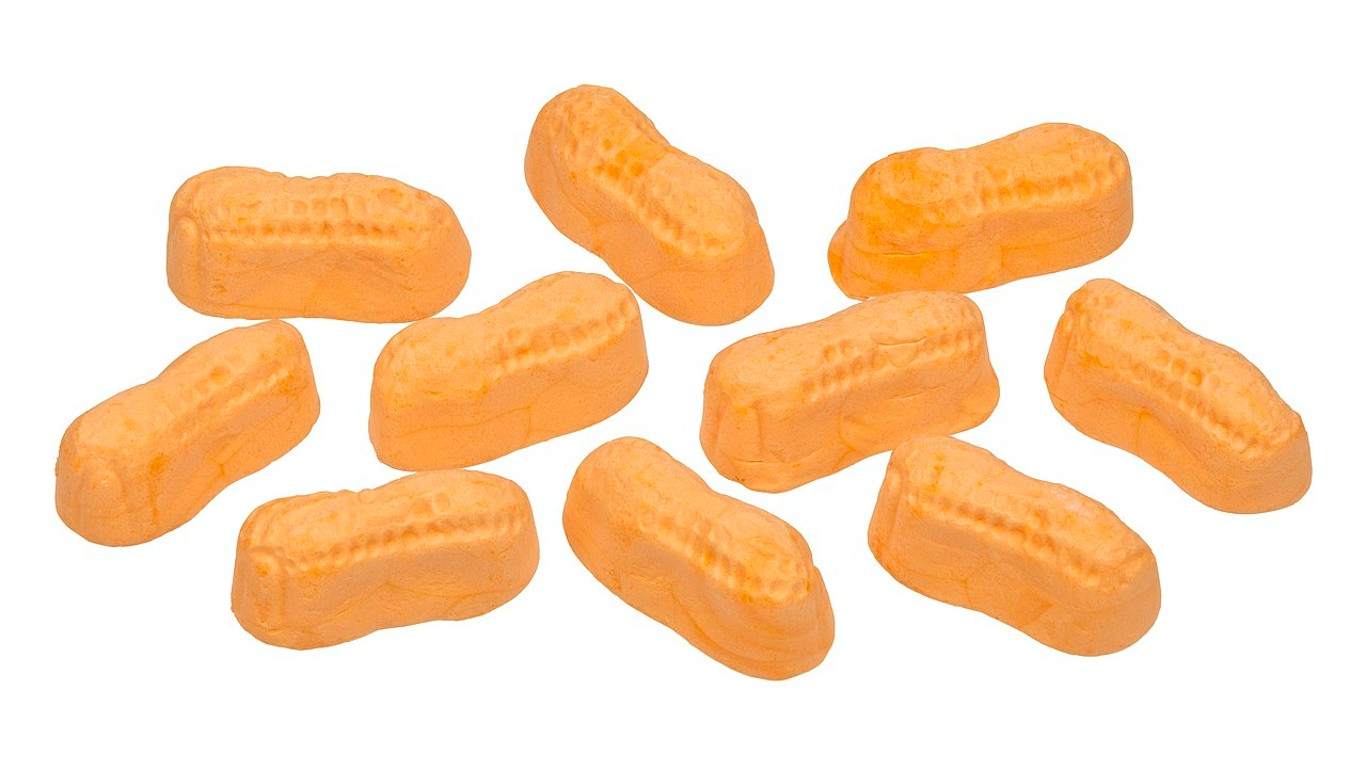
Circus Peanuts
> Invented: 1880s
Circus Peanuts, peanut-shaped marshmallow candies with a distinctive banana flavor, originated as “penny candies” in the 1880s. Spangler Candy Co. has been producing them since 1941. Their orange color may have helped them become a Halloween staple, but many surveys list them amongst the worst Halloween candies available.
Peanut brittle
> Invented: 1890
Peanut brittle, likely an American invention, was a common Halloween treat long before packaged candies became the norm. Some stories credit its creation to a Southern woman who accidentally made it when she used baking soda instead of cream of tartar while attempting to make taffy.
Devil’s food cupcakes
> Invented: 1902
The earliest recipe for devil’s food cake appeared in print in 1902, taking its name from its dark color — a deeper brown than most chocolate cakes. In the ’50s, devil’s food cupcakes with orange frosting started sprouting up as spooky Halloween goodies.
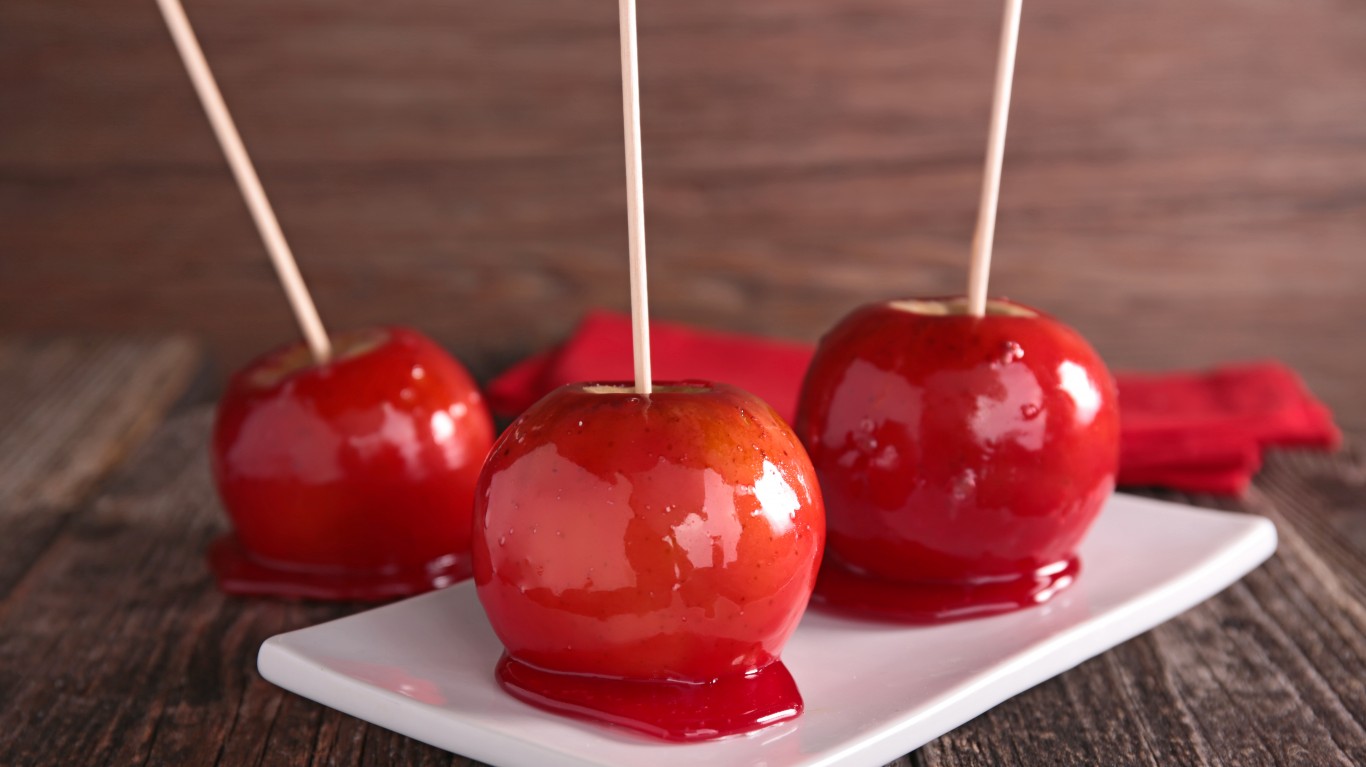
Candy apples
> Invented: 1908
Candy apples were created in 1908 by confectioner William W. Kolb. When searching for a way to market his new red cinnamon-flavored Christmas glaze, Kolb dipped some apples in the product and placed them in his store window. The apples were a hit, so he continued glazing the fruits and they became a fall tradition.
Pumpkin whoopie pies
> Invented: 1920s
Whoopie pies were invented either in New England or Pennsylvania (they are the official state treat of Maine, but also part of the Keystone State’s Amish traditions) and were first commercially produced around 1925. While the traditional whoopie pie is a chocolate cream-filled cake sandwich, a pumpkin version has become the autumn flavor of choice.

Wax lips
> Invented: 1927
Confectioner John W. Glenn used food-grade paraffin to create a soft, chewable, gum-like treat that was meant to be used as a gag — inserted into the mouth for effect but never actually swallowed. Wax lips remained popular Halloween gifts throughout much of the 20th century.

Reese’s Peanut Butter Cups
> Invented: 1928
Reese’s Peanut Butter Cups, often ranked as the single most popular Halloween candy in the U.S., originated around a hundred years ago. Hershey employee H.B. Reese developed the chocolate-and-peanut-butter confection in his free time. Reese left the chocolate-making giant to manufacture the cups on his own, and they were an instant success. The candy came home, as it were, when his firm merged with Hershey in 1963.
[in-text-ad-2]
Rice Krispies Treats
> Invented: 1939
Marshmallow crispy treats were created by Kellogg Company employees Mildred Day and Malitta Jensen in the company test kitchen in Battle Creek, Michigan. This combination of marshmallows, Rice Krispies or some other crisp rice cereal, and butter was soon creatively adapted for Halloween.
Caramel apples
> Invented: 1950s
A variation on candy apples (see above), this Halloween treat originated in the 1950s when a Kraft Foods salesman, Dan Walker, dipped apples in melted caramel to use up leftover caramel stock after Halloween. This practice however, has roots in England, where toffee-dipped apples are enjoyed around Guy Fawkes Day (aka Bonfire Night), November 5.

Dirt cake
> Invented: 1980s
Dirt cake is a distinctly American recipe invented in the ’80s, that may have been adapted from Mississippi mud pie. The pudding-like layered dessert is often served for Halloween with gummy worms or other creepy candies in the crushed-cookie “dirt” topping.
Get Ready To Retire (Sponsored)
Start by taking a quick retirement quiz from SmartAsset that will match you with up to 3 financial advisors that serve your area and beyond in 5 minutes, or less.
Each advisor has been vetted by SmartAsset and is held to a fiduciary standard to act in your best interests.
Here’s how it works:
1. Answer SmartAsset advisor match quiz
2. Review your pre-screened matches at your leisure. Check out the advisors’ profiles.
3. Speak with advisors at no cost to you. Have an introductory call on the phone or introduction in person and choose whom to work with in the future
Thank you for reading! Have some feedback for us?
Contact the 24/7 Wall St. editorial team.
